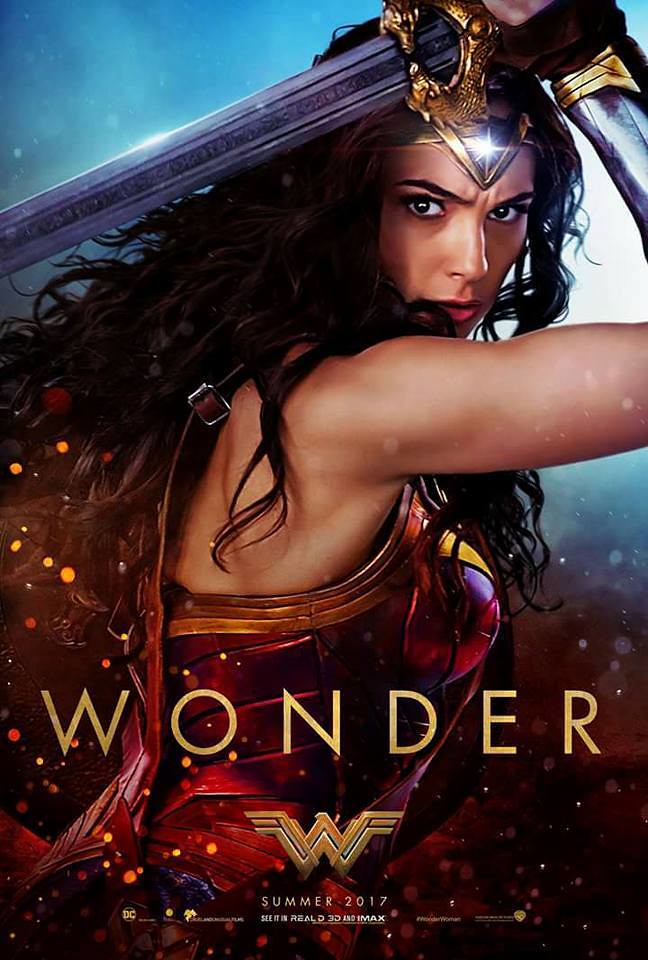“I am the man who can“ – But is Wonder Woman (2017) really the empowered superheroine the world has been waiting for?
By Luzi Adam
When trying to choose a topic for my Bachelor’s thesis in cultural studies, I thought about what interested me in current movies or other medial landscapes, and quickly moved on to the superhero movie genre. I have always been a fan of the recent Marvel and DC superhero movies, however it was always absurd to me how the superhero was male in every movie. Subsequently, I wanted my topic of research to be about gender in those superhero movies. As Wonder Woman (2017) was the first “proper“ superhero movie with a female lead character, this was the movie I chose to focus on. After reading articles, reviews and literature on the matter (and the movie), I came to the following research questions: does Wonder Woman (2017) enforce traditional gender representations? Or does it successfully deconstruct them and if it does, how?

For my theoretical framework, I chose to focus on traditional representations of gender in (superhero) movies. I continued to briefly introduce feminist film theory, and focused primarily on the concept of the “male gaze“. And as I expected, most of my own opinions about the film were validated by what I found in my analysis of the movie. Contrary to the promotion of the movie as “a template for what gender equality can look like“ and Diana being the empowered super heroine we have all been waiting for, there are still some flaws to be found with its representation of gender: The actresses’ outer appearance was one of the first points of criticism that was received. Gal Gadot, who was previously working as a model, is a beautiful woman, with a seemingly impeccable body that is more slim than strong. She was not the only actress in the movie with a modelling career, as one of the Amazons is portrayed by a famous supermodel. The costume that was designed for her reveals very much of her body and shows a lot of skin. The women in the movie, especially the Amazons including Diana, are perfectly styled, with impeccable make-up and flawless hair even in the most unflattering scenes. However, the camera focuses on the face of the women instead of their bodies, and is cleverly used to highlight the women’s strength and power. Diana is presented as very naive, especially in contrast to her male sidekick Steve Trevor. Still, it can be argued that the director, Patty Jenkins, wanted to demonstrate that a female superhero can be strong at the same time as compassionate.
The relationship of the two main characters can be seen as reinforcing traditional representations of gender, as Steve is mostly the one in command, and Diana, new to his world, following his orders. However, this dynamic changes throughout the movie, ending with Steve acknowledging Diana as the heroine who can save the world. Yet, Diana is only as powerful as she is because of her father, Zeus. All of her superhero power comes from him, thus the question of her empowerment is open to interpretation. In the end, the question whether the movie enforces or deconstructs traditional representations of gender is open to interpretation as well. Since the film industry, especially Hollywood, is first and foremost interested in the box office success and profit of a movie, it needs to cater to its respective audience. In the case of superhero movies and thus Wonder Woman (2017), this audience is predominantly male, and was apparently not deemed ready yet, for a film free of traditional gender representations.
Recommended further reading
Brown, Jeffrey A. The Modern Superhero in Film and Television: Popular Genre and American Culture. New York: Routledge, 2017 p. 37-62.
Curtis, Neil. 2017. “Wonder Woman’s symbolic death: on kinship and the politics of origins.“ Journal of Graphic Novels and Comics. DOI: 10.1080/21504857.2017.1279198.
Gauntlett, David (2008): Media, Gender and Identity: An Introduction. 2nd edition, Routledge. Published in the Taylor & Francis e-Library (59-83).
Hanley, Tim. „Wonder Woman Unbound: the Curious History of the World’s Most Famous Heroine“ 2014. Chicago. Chicago Review Press Incorporated. (33-542).
Jenkins, Patty. Wonder Woman. Movie. Directed by Patty Jenkins. Los Angeles, Warner Bros. 2017.
Jones, Pete (2018): “Diana in the World of Men: a character network approach to analyzing gendered vocal representation in Wonder Woman.“ Feminist Media Studies, DOI: 10.1080/14680777.2018.1510846.
Killian, Kyle D. (2019) “How Wonder Woman is, and is not, a Feminist Superheroine Movie,“ Journal of Feminist Family Therapy, 31:1, 59-61.
Lauzen, Dr. Martha M. 2016. “It’s a Man’s (Celluloid) World: Portrayals of Female Characters in the Top 100 Film of 2015.“ San Diego State’s Center for the Study of Women in Film & Television.
Mulvey, Laura. “Visual Pleasure and Narrative Cinema.“ Film Theory and Criticism: Introductory Readings. Eds. Leo Braudy and Marshall Cohen. New York: Oxford UP, 1999: 833-44.
Siegel, Tatiana. “The complex Gender Politics of the ´Wonder Woman´ Movie.“ The Hollywood Reporter, May 31st, 2017. Accessed on Sept. 18th 2021.
Smelik, A. M. 2007: “Feminist Film Theory.“ In: Cook, Pam (ed.) The Cinema Book. 3rd rev. Edition, pp. 491-504. London: British Film Institute.